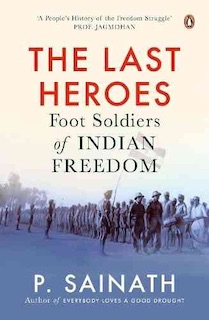
Adivasi | Books | Publishers >>
History | Success stories >>
The Role of Adivasis in the Freedom Movement – Jharkhand
Adivasi uprisings in the Jharkhand belt were quelled by the British through massive deployment of troops across the region. The Kherwar uprising and the Birsa Munda movement were the most important struggles in late-18th century against British rule and their local agents. […] In 1914, Jatra Oraon started the Tana Movement, which drew the participation of over 25,500 Adivasis. The Tana movement joined the [Gandhian] nation-wide Satyagraha Movement (the non-violent movement for independence) in 1920 and stopped the payment of land-taxes to the colonial Government. | Learn more here: Indigenous Knowledge: “The country can learn much from the beauty of Adivasi social practices, their culture of sharing and respect for all” – Continue reading: https://indiantribalheritage.org/?p=11066
“In his play Muktadhara (The Waterfall), Tagore robustly employs this element of freedom. The play relates the story of an exploited people and their eventual release from it. [Today, when] tribal populations across India are being uprooted with impudence Tagore’s message of freedom, in all its shades, is of utmost relevance.” – Bhaswati Ghosh in Freedom in Tagore’s Plays | Learn more >>
“In fact, we still do not know to what extent global supply chains are maintained by slavery and child labor. Because of these and other factors, slavery today is more profitable than ever before, and also more woven into the global economy than ever before.” – Siddharth Kara on the persistence of modern slavery| Learn more >>
Human trafficking is a crime. To report in India, call
– Shakti Vahini +91-11-42244224, +91-9582909025 or
– Childline 1098 (national helpline)
Human Rights Commission (posts) | www.nhrc.nic.in (Government of India) >>
Learn more
Adverse inclusion | “Casteism” and its effect on tribal communities
Biodiversity and development – Jharkhand
Bondage | Bonded labour | Human trafficking | Slavery | Zamindari
Chief Justice of India | Imprisonment & rehabilitation
Childhood | Childrens rights: UNICEF India | Safe search
Colonial policies | Freedom Struggle | Independence
Community facilities | NGO | Organizations
Health and nutrition | Recommendations by the Expert Committee
Hul (Santal rebellion 1855-1856) | Tribal freedom fighters
Human Rights Commission (posts) | www.nhrc.nic.in (Government of India)
Information provided by Indian government agencies and other organizations (FAQ)
Nomadic and Semi-Nomadic Tribes | SEED – Government scheme
Shakti Vahini: Striving for Just, Free and Equitable society
Scheduled Tribe (ST) | Denotified Tribe vs. “criminal tribe“
State wise ST list (Scheduled Tribes)
Video | Hul Sengel: The Spirit of the Santal Revolution (1855) – Jharkhand
Video | Lessons on Human Trafficking – Freedom United
Women | Safe search | President Droupadi Murmu on women’s empowerment